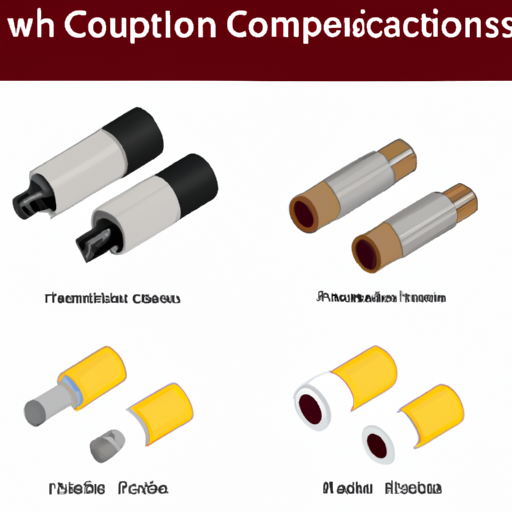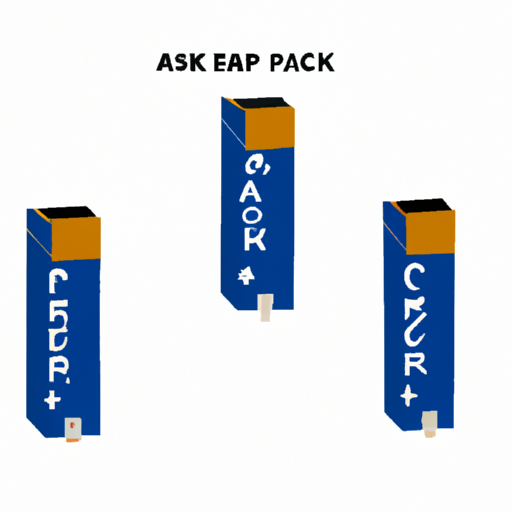What are the common production processes for coupling capacitors?
Common Production Processes for Coupling Capacitors
I. Introduction
Coupling capacitors are essential components in electronic circuits, serving the critical function of allowing AC signals to pass while blocking DC components. They play a vital role in various applications, including audio equipment, radio frequency circuits, and power supply systems. Understanding the production processes of coupling capacitors is crucial for manufacturers and engineers alike, as it directly impacts performance, reliability, and cost. This blog post will explore the common production processes for coupling capacitors, delving into the types of capacitors, raw materials, manufacturing techniques, and innovations shaping the industry.
II. Types of Coupling Capacitors
Coupling capacitors come in various types, each with unique characteristics and applications:
A. Ceramic Capacitors
Ceramic capacitors are widely used due to their small size, low cost, and stability. They are made from ceramic materials that exhibit dielectric properties, making them suitable for high-frequency applications.
B. Film Capacitors
Film capacitors utilize thin plastic films as the dielectric material. They are known for their excellent stability, low loss, and high insulation resistance, making them ideal for audio and power applications.
C. Electrolytic Capacitors
Electrolytic capacitors are polarized capacitors that use an electrolyte as one of the plates. They offer high capacitance values in a compact size, making them popular in power supply circuits.
D. Tantalum Capacitors
Tantalum capacitors are known for their high capacitance-to-volume ratio and reliability. They are often used in applications where space is limited, such as in mobile devices and aerospace electronics.
E. Comparison of Different Types
Each type of coupling capacitor has its advantages and disadvantages, making them suitable for specific applications. For instance, ceramic capacitors are preferred for high-frequency circuits, while electrolytic capacitors are favored for power supply applications due to their high capacitance.
III. Raw Materials Used in Coupling Capacitor Production
The production of coupling capacitors involves various raw materials, each contributing to the capacitor's performance and reliability.
A. Dielectric Materials
The dielectric material is crucial for a capacitor's function. Common dielectric materials include:
1. **Ceramic Materials**: Used in ceramic capacitors, these materials provide excellent dielectric properties and stability.
2. **Plastic Films**: Employed in film capacitors, materials like polyester and polypropylene are used for their low loss and high insulation resistance.
3. **Electrolytes**: In electrolytic capacitors, electrolytes serve as the conductive medium, allowing for high capacitance values.
B. Conductive Materials
Conductive materials are essential for forming the capacitor's plates. Common conductive materials include:
1. **Metals**: Aluminum and tantalum are frequently used due to their excellent conductivity and availability.
2. **Conductive Polymers**: These materials are increasingly used in modern capacitors for their lightweight and flexible properties.
C. Insulating Materials
Insulating materials are used to prevent unwanted current flow between the capacitor's plates. These materials must have high dielectric strength and stability.
IV. Common Production Processes
The production of coupling capacitors involves several key processes, each critical to ensuring the final product meets quality and performance standards.
A. Material Preparation
1. **Sourcing and Quality Control of Raw Materials**: The first step in capacitor production is sourcing high-quality raw materials. Manufacturers must ensure that the materials meet specific standards and specifications to guarantee performance.
2. **Pre-treatment Processes**: Before production, raw materials undergo pre-treatment processes such as cleaning and drying to remove impurities and moisture, which can affect the capacitor's performance.
B. Dielectric Layer Formation
The formation of the dielectric layer varies depending on the type of capacitor being produced:
1. **Ceramic Capacitor Production**:
- **Powder Preparation**: Ceramic powders are mixed with additives to achieve the desired dielectric properties.
- **Pressing and Sintering**: The powder is pressed into shape and then sintered at high temperatures to form a solid dielectric layer.
2. **Film Capacitor Production**:
- **Film Extrusion**: Plastic films are extruded to the desired thickness and width.
- **Metallization**: A thin layer of metal is deposited onto the film to form the capacitor plates.
3. **Electrolytic Capacitor Production**:
- **Anodization**: The aluminum foil is anodized to create a thin oxide layer that serves as the dielectric.
- **Electrolytic Deposition**: An electrolyte is applied to form the second plate of the capacitor.
C. Assembly Processes
Once the dielectric layers are formed, the assembly process begins:
1. **Layer Stacking and Winding**: For capacitors that require multiple layers, the dielectric and conductive layers are stacked or wound together to form the capacitor structure.
2. **Encapsulation and Sealing**: The assembled capacitor is encapsulated in a protective material to prevent environmental damage and ensure reliability.
3. **Terminal Attachment**: Terminals are attached to the capacitor to facilitate electrical connections in circuits.
D. Testing and Quality Control
Quality control is a critical aspect of capacitor production, ensuring that each capacitor meets performance standards:
1. **Electrical Testing**: Capacitors undergo electrical testing to measure parameters such as capacitance, leakage current, and equivalent series resistance (ESR).
2. **Mechanical Testing**: Mechanical tests, including thermal cycling and vibration tests, assess the capacitor's durability and reliability under various conditions.
3. **Reliability Testing**: Long-term reliability tests, such as life testing and aging tests, are conducted to predict the capacitor's lifespan and performance over time.
V. Environmental Considerations
As the electronics industry grows, so does the need for sustainable practices in capacitor production.
A. Waste Management in Capacitor Production
Manufacturers must implement effective waste management strategies to minimize environmental impact. This includes recycling scrap materials and reducing waste generated during production.
B. Recycling of Materials
Recycling initiatives for metals and other materials used in capacitors can significantly reduce the environmental footprint of production processes.
C. Compliance with Environmental Regulations
Manufacturers must adhere to environmental regulations and standards to ensure that their production processes are sustainable and environmentally friendly.
VI. Innovations in Coupling Capacitor Production
The capacitor manufacturing industry is continually evolving, with innovations driving improvements in efficiency and sustainability.
A. Advances in Materials Science
Research in materials science has led to the development of new dielectric and conductive materials that enhance capacitor performance and reduce costs.
B. Automation and Industry 4.0
The integration of automation and Industry 4.0 technologies in capacitor production has streamlined processes, improved quality control, and reduced production times.
C. Sustainable Production Practices
Manufacturers are increasingly adopting sustainable practices, such as using eco-friendly materials and energy-efficient production methods, to minimize their environmental impact.
VII. Conclusion
In summary, the production processes for coupling capacitors are complex and multifaceted, involving various types of capacitors, raw materials, and manufacturing techniques. As the demand for electronic components continues to grow, manufacturers must focus on quality, efficiency, and sustainability in their production methods. Innovations in materials science and automation are paving the way for a more sustainable future in capacitor manufacturing. Continuous improvement in production processes will be essential to meet the evolving needs of the electronics industry and ensure the reliability and performance of coupling capacitors in various applications.
VIII. References
- Academic journals on capacitor technology and materials science.
- Industry reports on trends and innovations in capacitor manufacturing.
- Manufacturer guidelines and standards for capacitor production and testing.
This comprehensive overview of coupling capacitor production processes highlights the importance of each step in ensuring high-quality, reliable components for electronic circuits.


